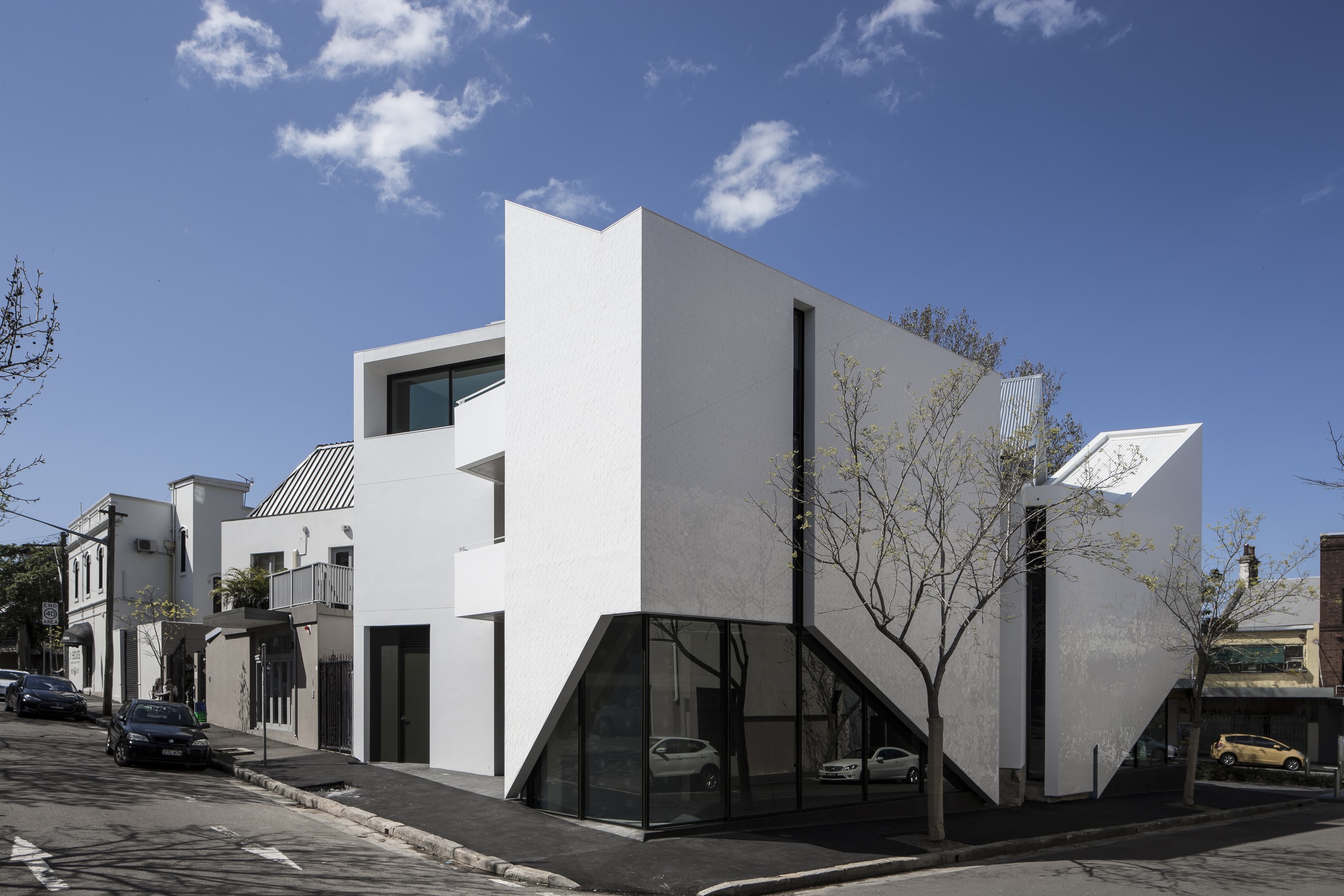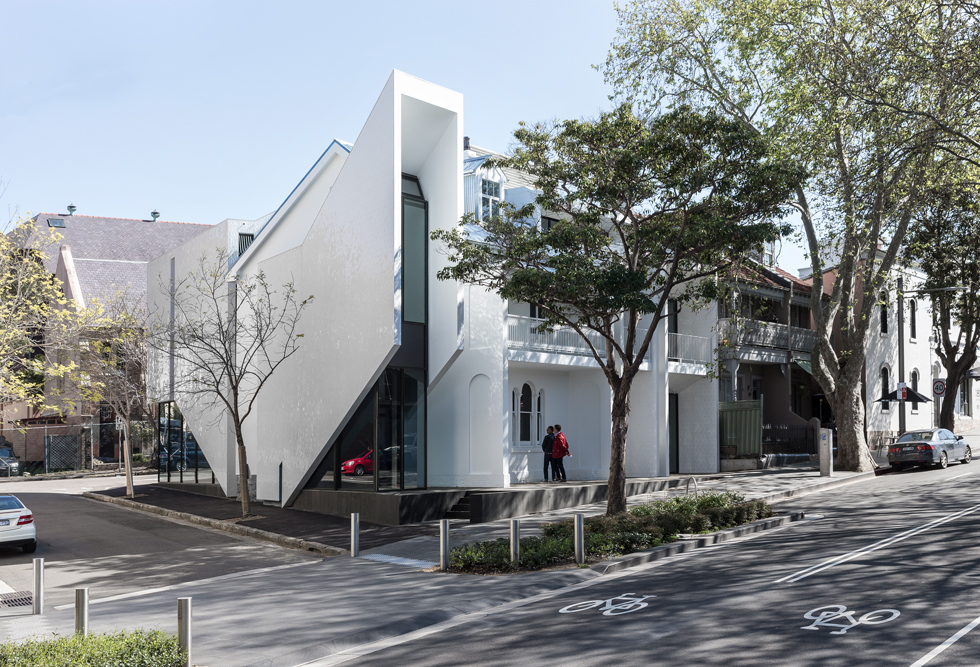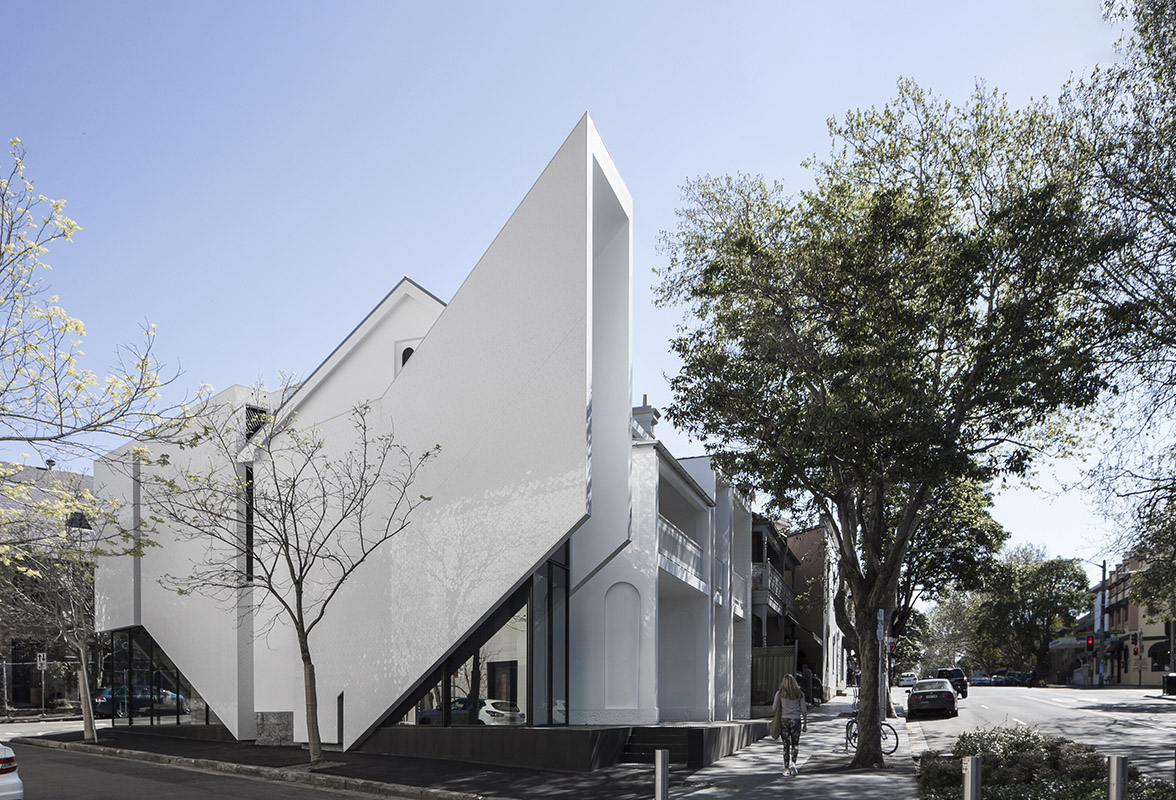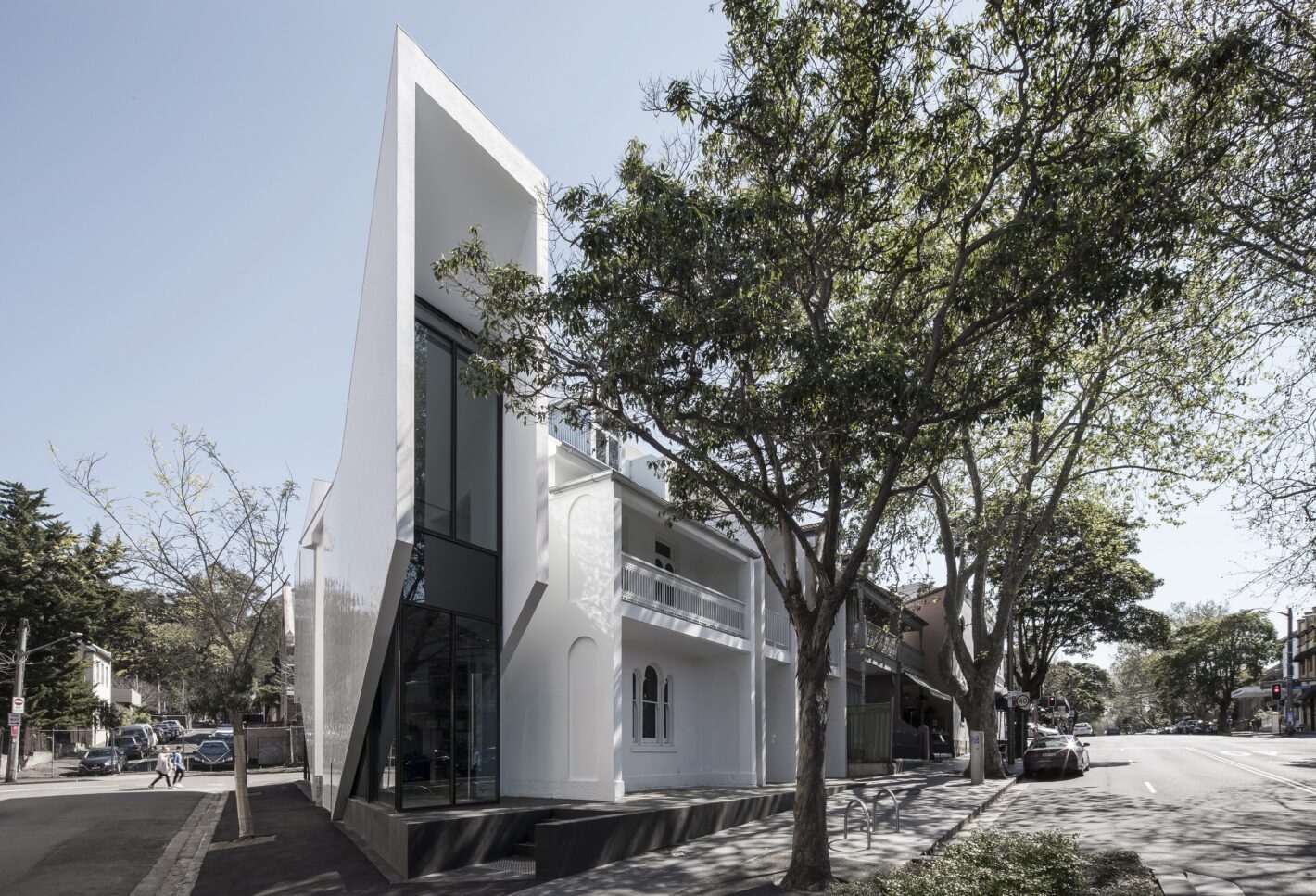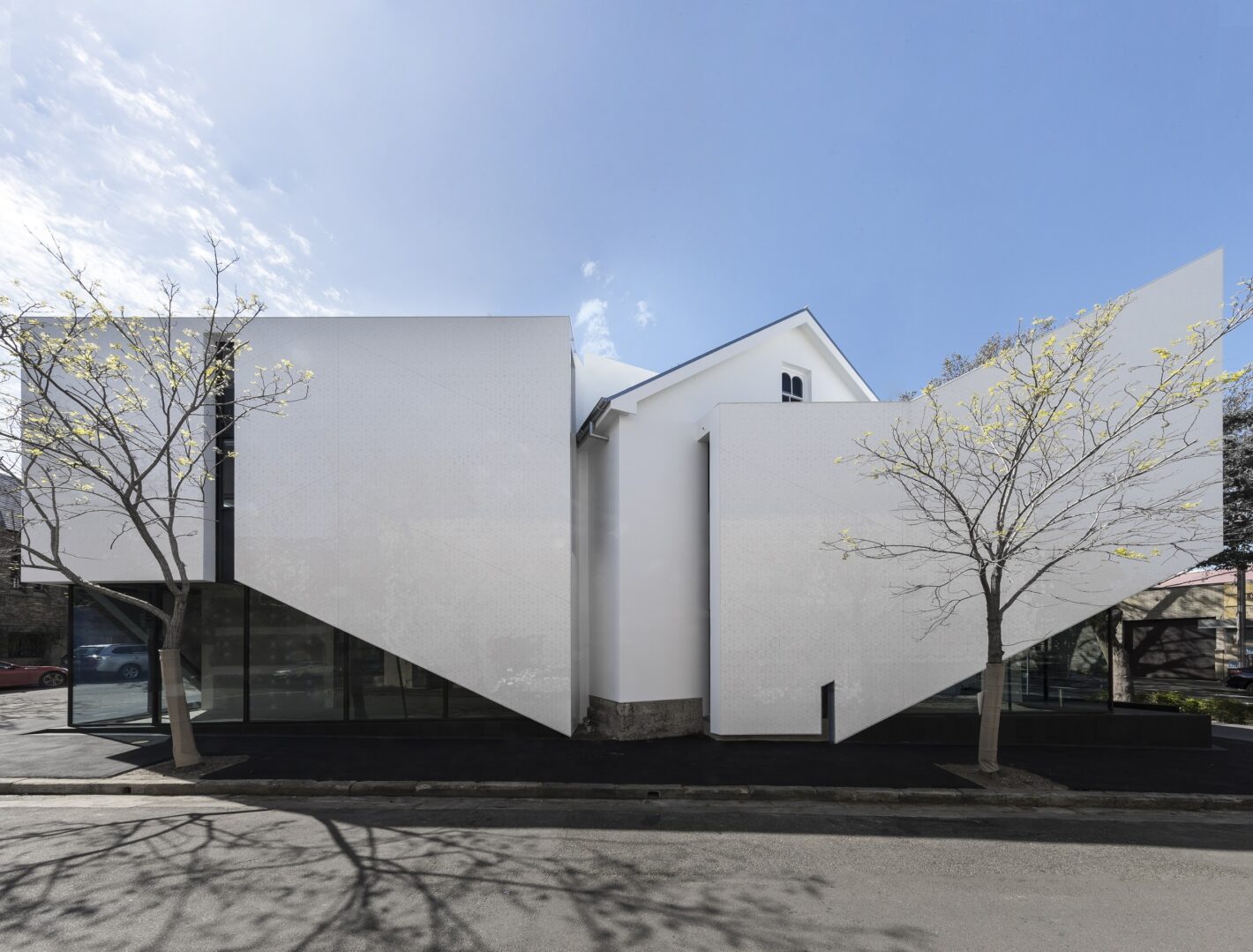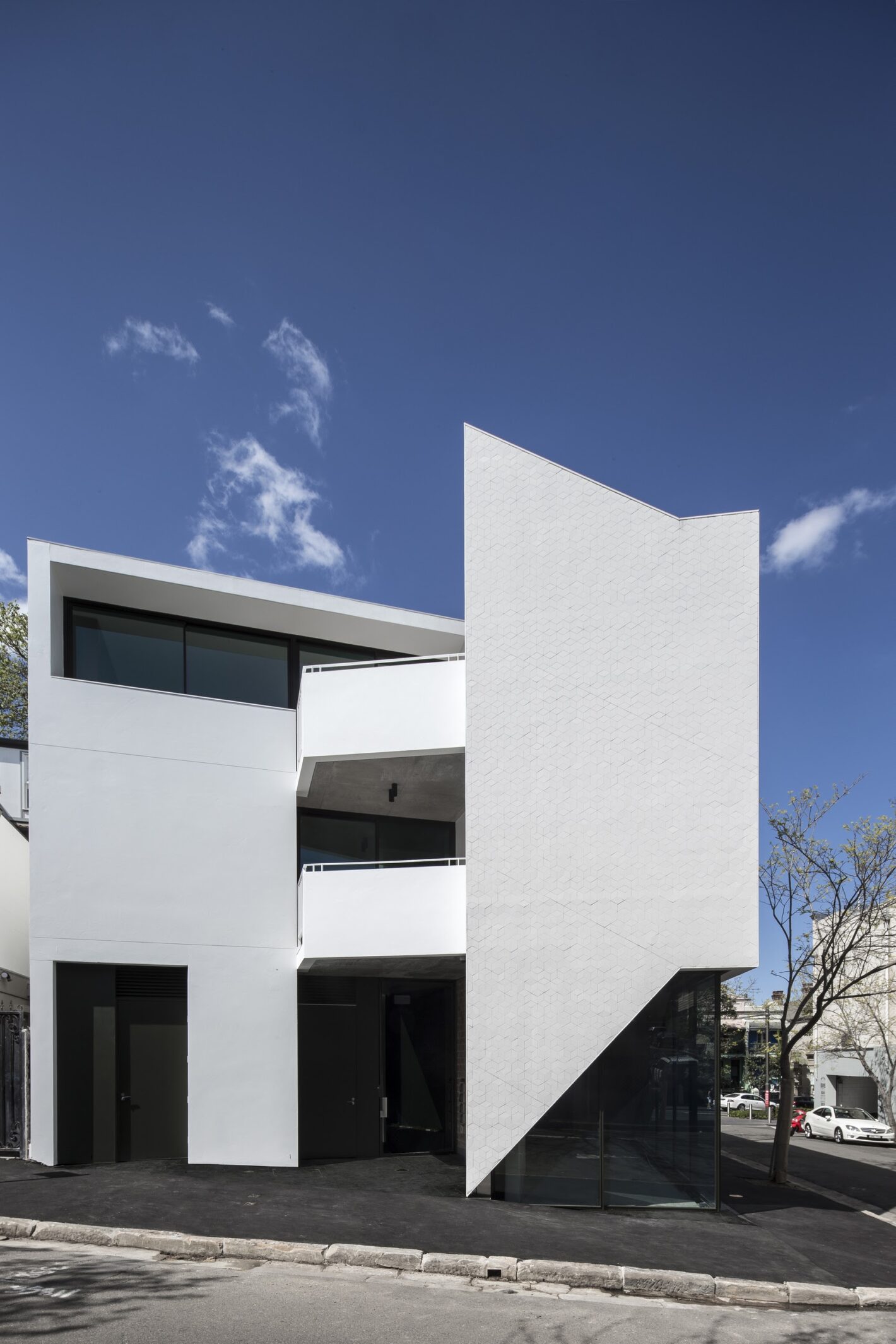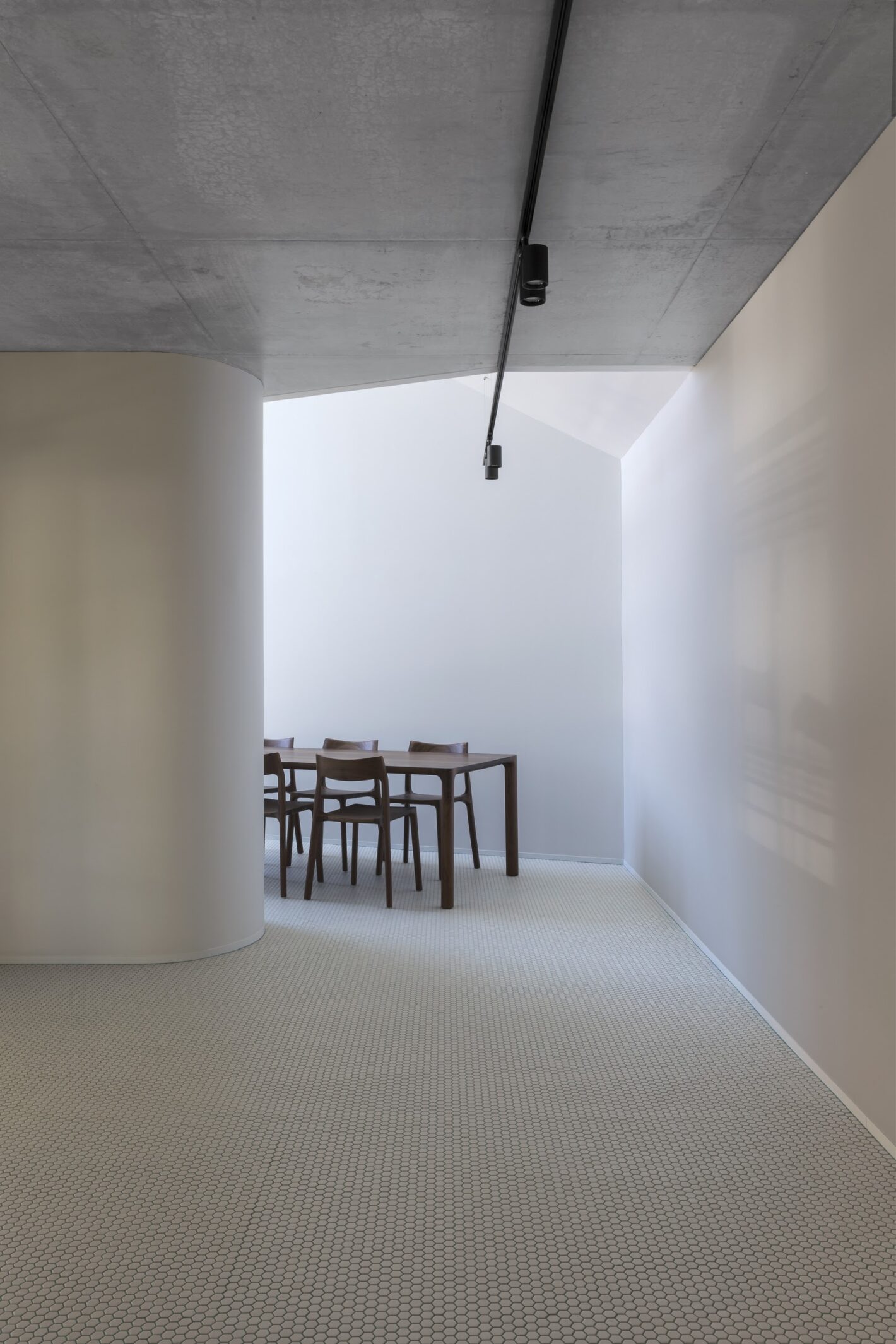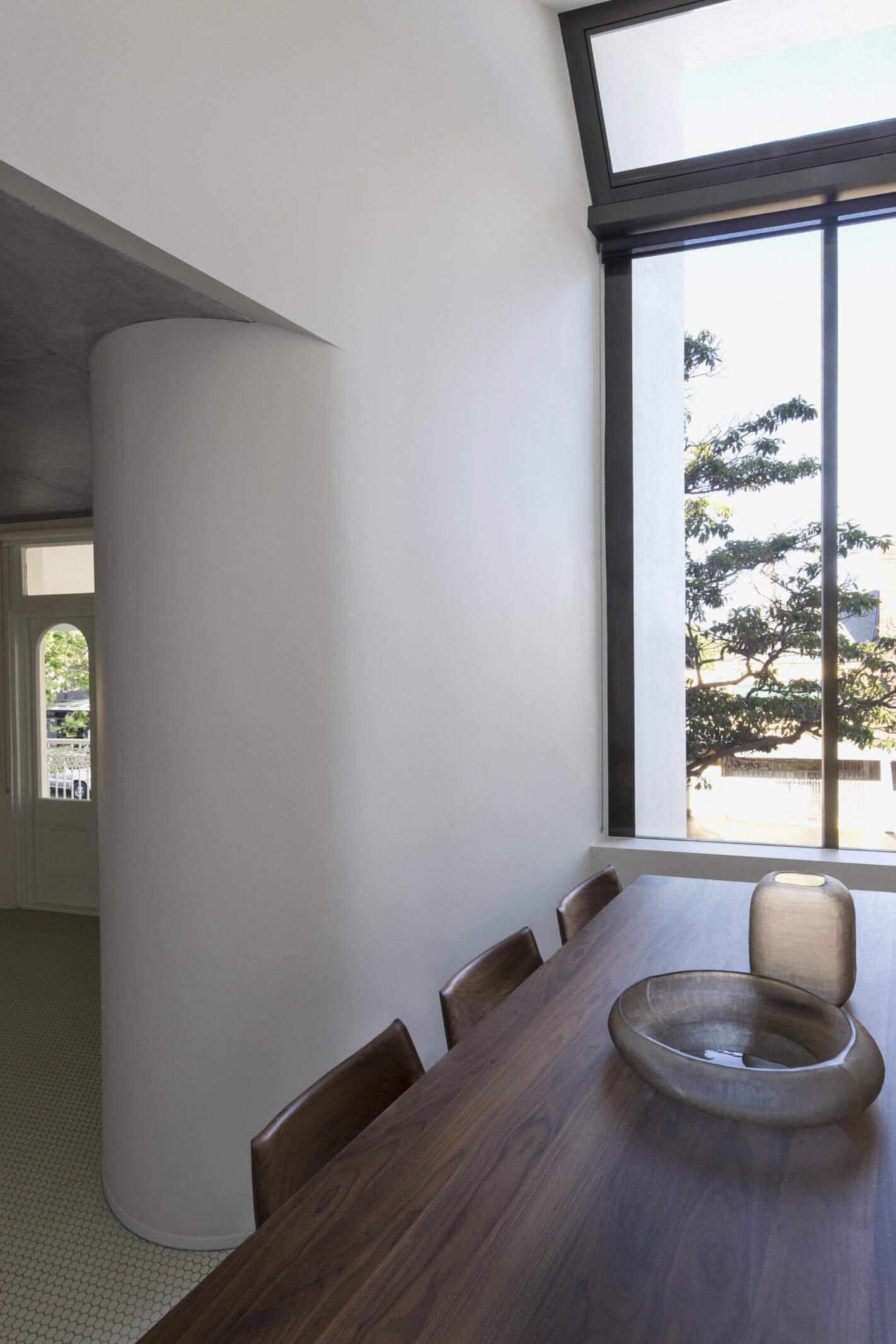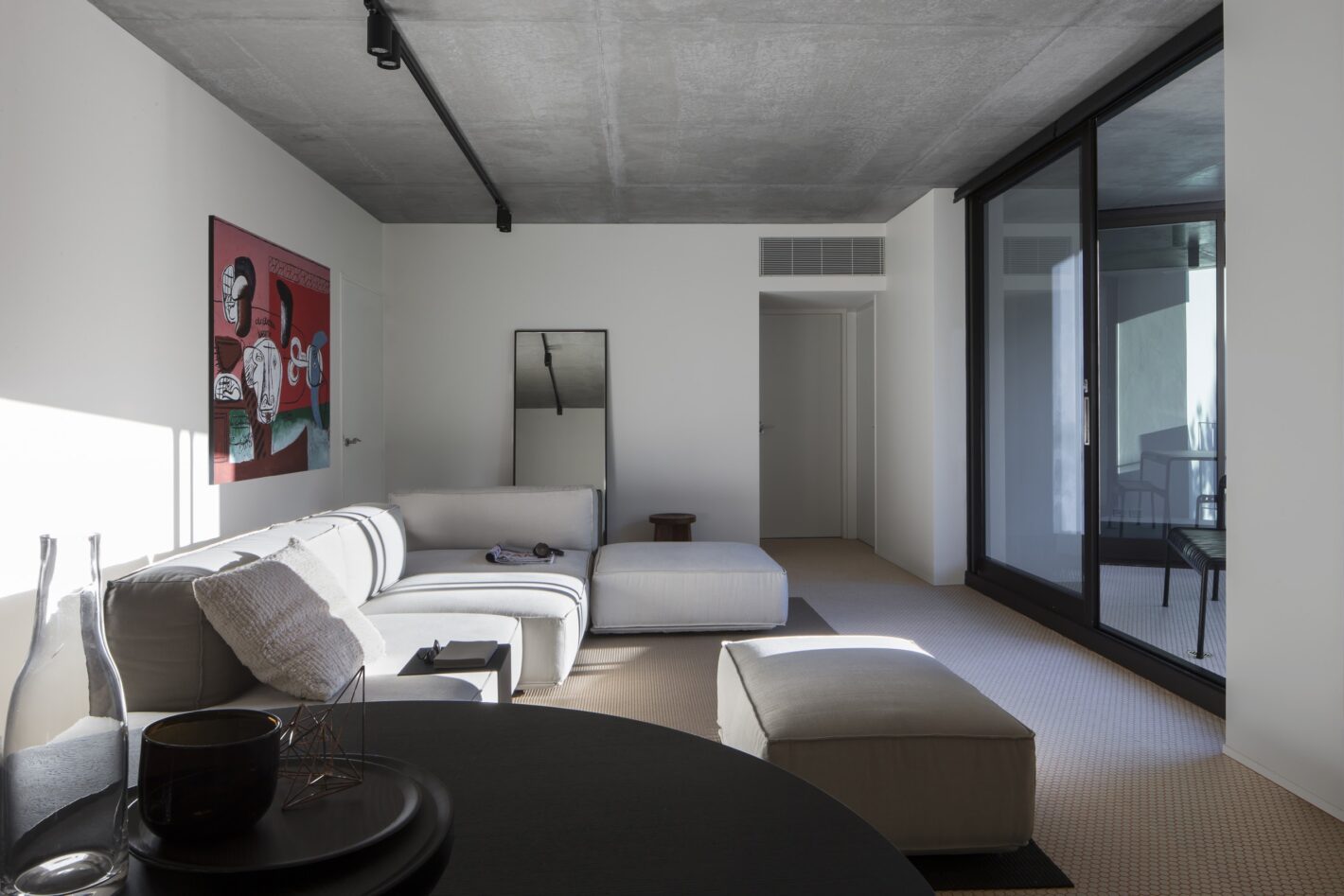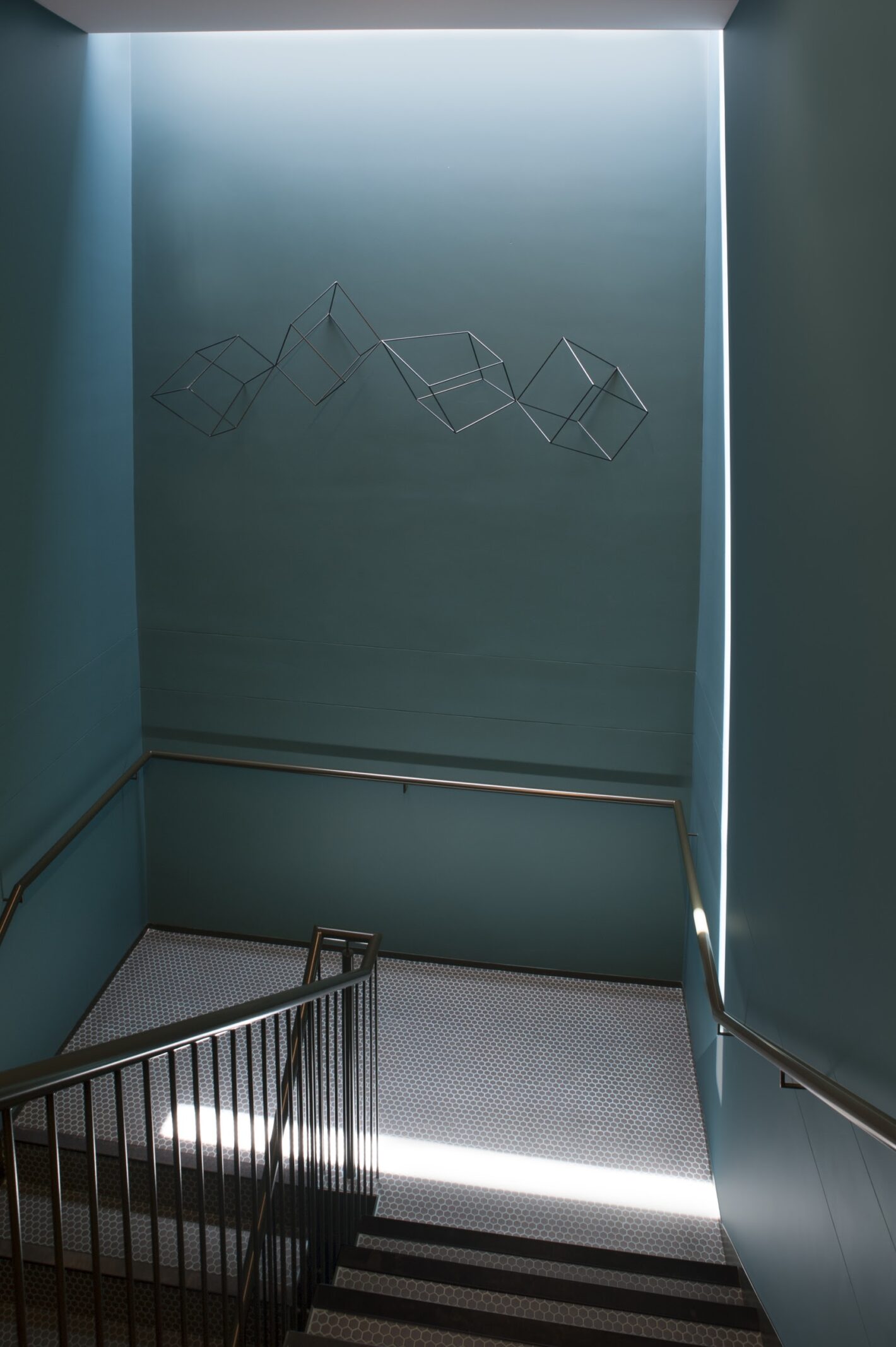Located on a prominent corner on Surry Hills, Crown 515 reinterprets the traditional terrace row and corner building in a contemporary design of angular shapes and shimmering tessellated tiles. Its dynamic form includes a ground-floor restaurant contributing to the lively Crown Street food scene, and five apartments on two upper floors offer bespoke residences.
Expand ContentIts character is formed by two distinct but related architectural gestures that engage in a dialogue on either side of an existing free-standing terrace house. Making use of an empty block to one side and a small triangular parcel of adjacent land, the language of the new infill sections is a reinterpretation of the traditional terrace row and references the 30-degree pitched roofs and rhythmical vertical portals of adjoining terraces. Conversely, the solid walls of the building’s street corner and southern façade are lifted, like the fabric of a tent, to make an open, active and public corner.
A bluestone plinth forms a datum at the base of the building, resolving the changing ground levels and bringing the public into the site. This plinth becomes a platform for outdoor dining or a ledge for visitors to sit and gather.
Clad in gloss white tessellated mosaic tiles, the façade reflects its surroundings to softly catch and amplify the southern light. Effectively, the tiles lighten the building’s mass, which utilises a strong form to resolve this formerly fractured Surry Hills block.
In an unusual move, the residential lobby is located to the rear of the development, along the site’s quietest frontage. As such, residents reach apartment floors via a stairwell stitched into the heart of the building. The lobby experience itself is enhanced by a custom-made artwork that is lit from above by a slender skylight. In contrast with the bright white exterior, this interior is dark and rich with colour.
Unlike the lobby, colour schemes for the residences become lighter in accord with the façade. Each apartment is a uniquely identifiable spatial exploration of the selected interior hue or key features, which draw on the best characteristics of the surrounding context. Mosaic tiles on the floor, for example, are warm and neutral in the living room, but bold and bright in the bathrooms.
The apartments themselves are woven through the existing terrace, and in some instances suspended from structural walls of the original dwelling, creating varied, complex, and engaging spatial qualities. The outcome is a distinctive and robust building designed to bring old and new together as one.
2017 Winner AIA National Architecture Award Multi-Unit Residential
2017 Winner AIA NSW Architecture Award Multi-Unit Residential
